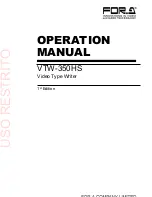
The inverter adapts its current feed as soon as a drop or spike incident occurs in order to bolster the grid voltage. The
support takes place in the event of voltage drop in the form of over-excited reactive current (corresponds to a capacitive
load), in the event of voltage spike in the form of over-excited reactive current (corresponds to an inductive load). In the
reactive current priority mode, the effective current is reduced to the extent necessary to comply with the limits of the
maximum continuous current of the inverter.
A drop or spike is detected if either the normal voltage range setting is exceeded by at least one phase-phase or phase
neutral conductor voltage, or if an abrupt change in the positive or negative phase sequence voltage greater than the
dead band setting occurs. The extent of the abrupt change in voltage with regard to the positive and negative phase se-
quence voltage equates to the difference between the pre-fault voltage and the actual voltage based on the reference
voltage. The pre-fault voltage is calculated as a 50-period mean value.
Fig. 44:
Formula no. 1
The reactive current is adapted using a response time of <20 ms and a transient time of <60 ms after the incident has oc-
curred. Responses to changes in the voltage during the incident or to the voltage recovery at the end of the incident take
place with the same dynamic.
The formula for calculating the dynamic reactive current that is fed for the positive or negative phase sequence voltage is:
Fig. 45:
Formula no. 2, depending on the nominal current IN of the inverter
For the positive and negative phase sequence voltage,
Δu
equates to the difference between the pre-fault voltage and the
current voltage based on the reference voltage. The pre-fault voltage is calculated as a 1-min mean value.
Fig. 46:
Formula no. 3
On account of the definition of a voltage jump in pre-norm EN50549-2 and in VDE-AR-N 4120 and VDE-AR-N 4110, it is
typically the case that another voltage jump is detected when the incident is at an end, when the fault is rectified and
when the voltage returns to a normal state. The result of this is that in an active operation mode a dynamic grid support
using a fast feeding of residual current remains active even after the incident has passed and that reactive current is fed
in according to the formulae (2) and (3). Dynamic grid support using fast feeding of residual current is then deactivated
after a configured minimum support time, usually 5 s.
I
b
1
I
Fig. 47:
Formula no. 4
10.3.3
Extract from FRT menu
Country-
spec. Set-
tings
Men
u
level
Display/
Setting
Action in this menu/meaning
4
1
2
3
4
FRT (Fault Ride
Through)
NOTE: The device supports dynamic grid stabilization (Fault Ride-
Through).
KACO blueplanet gridsave 50.0TL3-S
Page 64
EN
















































